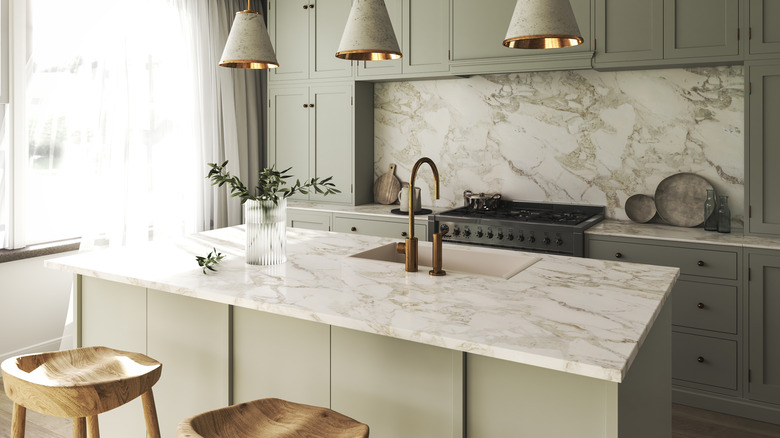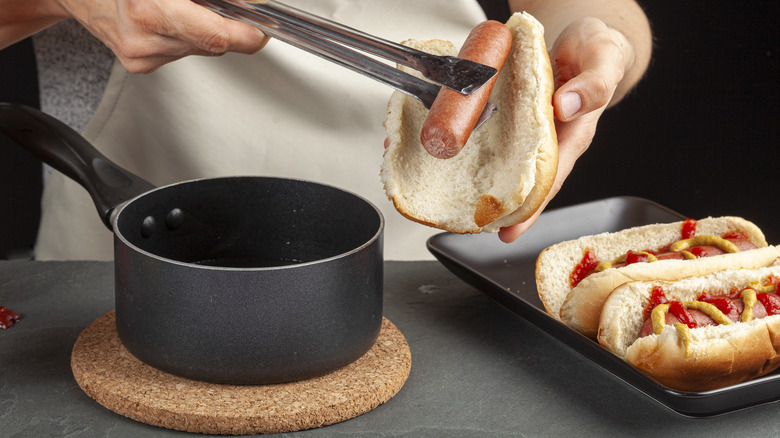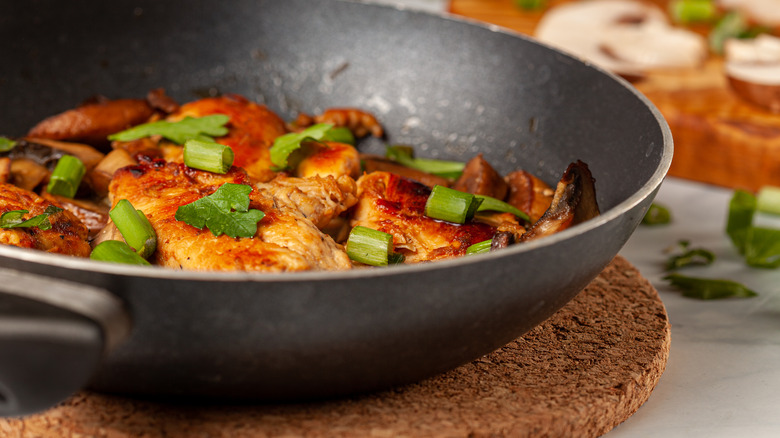What Happens If You Place A Hot Pan On Your Marble Countertop
Marble is one of the most durable materials on the planet, yet placing a hot pan right out of the oven onto it can cause it to crack. It's easy to move pans around without thought, perhaps pulling a cookie sheet out and setting it down without thinking about the consequences. Yet, the heat will create a higher risk that the marble will scratch, discolor or change color, or crack significantly.
You may be thinking that you've done it before without any consequences. However, in the case of thermal shock, you can expect damage to occur. This shock occurs when something hot is placed on something cold, causing an internal fracture of the stone. Thermal shock may happen with marble and most other natural stones, including granite. This is easy to do in the kitchen, especially in the summer when the air conditioner may be running, keeping the stone's surface cool.
Since installing marble countertops can be an expensive but beautiful statement, it's best to find ways to protect those surfaces from risks. You can still have marble countertops in a busy kitchen, but consider a few simple methods to protect them over time.
Why heat can damage marble
All natural stone is heat resistant, which means it's not likely that placing your curling iron on your bathroom countertop is going to cause much damage. It's just not hot enough. However, thermal shock is a very different process. Marble is formed over centuries. It starts as limestone and minerals, but over time and with various heat cycles, the materials meld together. When it reaches a very high heat, a liquid can form, allowing for the veining and beauty seen in each of these natural slabs.
When a very hot pan is placed on a cooler marble countertop, this sudden and drastic change in temperature causes stresses within the material itself. All of the small lines can shatter, causing a crack to form. This can often be a sudden crack or split forming in the marble. The more prominent the temperature difference, the larger the crack is likely to be. While repairs can be made, that's not a simple process, and it may alter the value of the countertop in the long term.
Simple strategies to protect marble countertops from heat
Don't give up on installing marble countertops in your home just yet, but instead, be consistent about protecting them. Place a beautiful, custom-made cutting board on your countertop to serve as a decorative addition. Position it near the stove or oven so you're less likely to put something hot directly on the countertop. You can also use wrought iron or wood trivets that offer a bit of flavor or a fun theme you enjoy.
If you already have a few areas of concern, you can repair marble countertops (though you should let a professional handle this task). The goal would be to polish the surface of the marble to remove any imperfections, including discolorations and slight cracks. If the marble splits in two, which is unlikely unless there is a lot of external pressure, that is a more complex process typically requiring the replacement of the marble instead. In situations where you have just a few scratches or yellowing, it may be possible to use a marble or natural stone cleaner to buff out the imperfections. Do this with a felt cloth.
Also, know what the marble manufacturer recommends to protect the stone. Some require sealing it annually to safeguard the surface. Factors like the thickness and production process of the marble can impact its overall durability. With proper care for your marble, it can last for decades and remain a stunning addition to your home.


